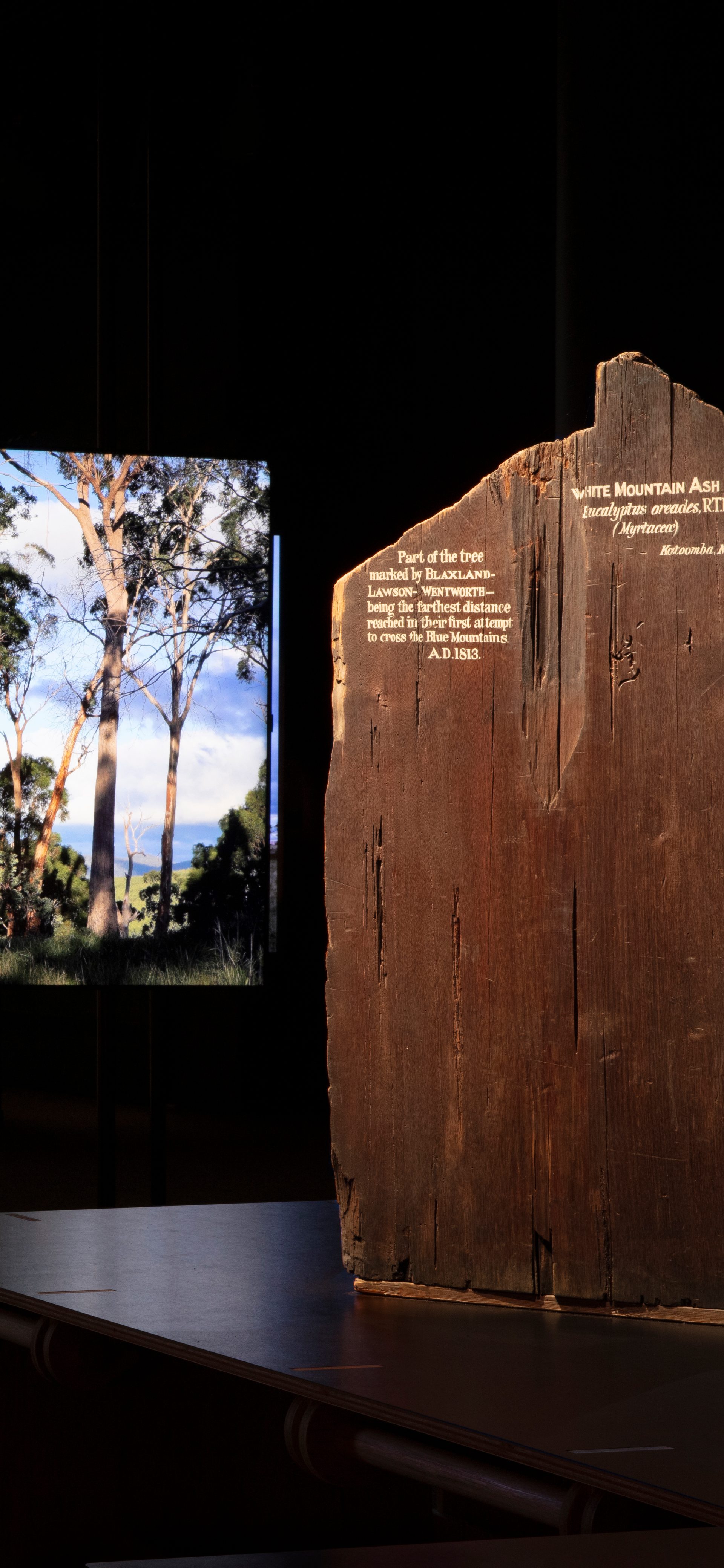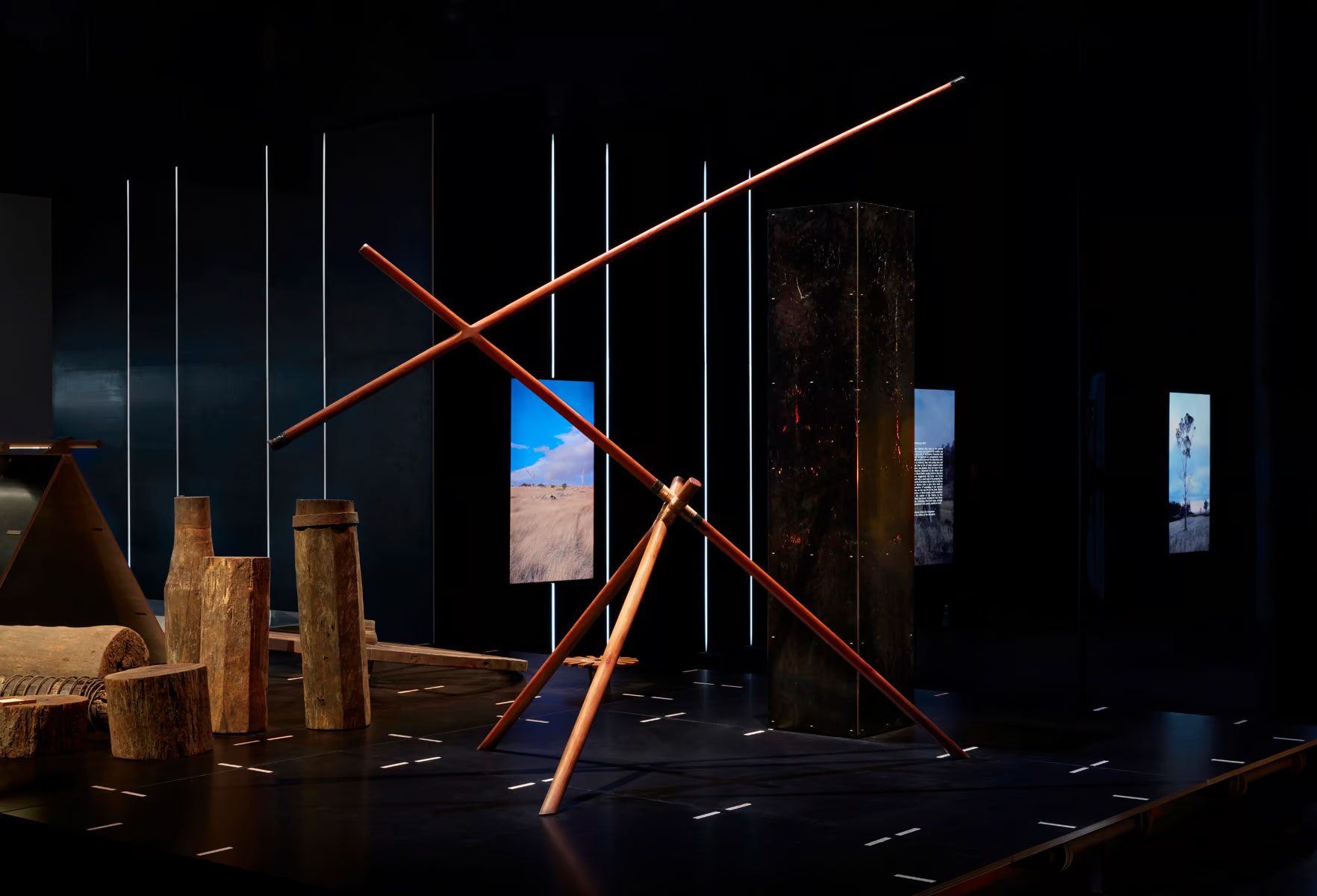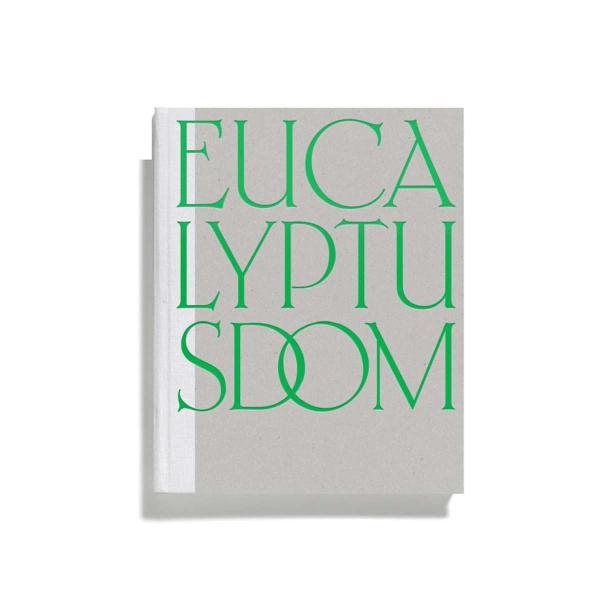Right of Reply

overview
In ‘Right of Reply’, inaugural Powerhouse Director of First Nations, Emily McDaniel, reflects on the evolving relationship between Powerhouse and First Nations peoples.
‘I think often about the earliest inception of the museum we know today as Powerhouse. I wonder what might have been going on inside the minds of the founding committee members when they first convened in 1880. I dare say that if they ever projected their imaginations forward to today they would not have conceived of First Nations leadership at the museum.’
Indigenous peoples were perceived to be a momentary presence upon the landscape, diminishing with each generation until we would be consigned to a memory of the past. The inception of this institution and its early practices were driven by a vision of trade, industry and economic growth for the future of the colony. It was a future we were not imagined to be a part of. This museum was not created for First Nations peoples; its structure and practice never intended to benefit us.
I was appointed the inaugural Powerhouse Director First Nations in August 2021, having joined the organisation earlier that year as one of four curators on Eucalyptusdom – an exhibition that did not enshrine the collecting practices of the past, but rather mapped the failure of foresight by the museum's forebears. The project's development process served as a diagnostic tool, ushering in the beginning of a better institutional understanding of the illness created historically through a wilful omission of First Nations representation. It coincided with the establishment of the Powerhouse First Nations Directorate, signalling a self-determined future and direction for First Nations engagement and representation.
Within the Eucalyptusdom curatorial team, I was tasked particularly with consideration of how this museum's relationship with, exploitation of, and narrative surrounding the eucalypt implicated or included First Nations people. Like most cultural institutions, it is as telling what the Powerhouse Collection excludes as what it includes. Countless oils, vials of kino, sheets of pulped paper, thousands of wood samples, turned-timber pedestals and furniture, pianos, sledges and pipes made of eucalypt hardwoods told an expansive narrative of industry, expansion, exploitation and deforestation. Among it all, our absence — the lack of our stories, memories, knowledge and objects absolutely glaring.
That void left us with a curatorial provocation: how to make an exhibition in response to the collection when its narrative is a history of exclusion?
We decided to acknowledge the lack of acknowledgement. We laid bare the absence, the silence and exclusion as a site for critical reflection, recognition and responsibility.

We commissioned 21 creative practitioners to lead the development of new works in response to the Collection – including nine First Nations artists and designers, who created works that respond to our imposed and presumed absence, the attempted erasure of our voices.
Trawlwoolway artist Julie Gough's work Witness recognises the trees as sentinels, onlooking the colonial violence inflicted upon the First Nations of Lutruwita. This work, which animates the trees as markers of time and memory, sits in dialogue with the perceived neutrality of hundreds of timber specimens. In Without You I Am Nothing (Curtis Bennett/ White Ash), by Worimi artist Dean Cross, a champion woodchopper concedes to the wood after recognising a hard knot caused by a frost that would surely break his axe – speaking to knowledge contained within the eucalypt and qualities of resilience and resistance inherent in it and in us.
In reckoning with the museum's violent history of extracting and exploiting natural resources for collection and study, a deeper complexity of First Nations narratives was revealed. What had at first appeared a total omittance, instead revealed itself to be a subliminal story of the potency of Country.
It is a misapprehension that cutting a tree down severs its relationship to Country; that when you mill it, when you pulp it, when you extract it, when you liquefy it – that this slowly reduces the potency of Country evident within that object.
As Wiradjuri artist Jazz Money said in introducing her work Garrandarang, 'No colonial intervention can alter the truth of Country'. The expanse of timber specimens, kino and oils exhibited in Eucalyptusdom are not only objects from Country, they are Country.
Working in gadayka, Yolŋu artist Bonhula Yunupinu and Damien Wright crafted Djambatj Mala ga Garungu. The work continued their ongoing cross-cultural Bala Ga' Lili project. Founded on mutually beneficial ways of working, respect and commitment to a continuous and ever-evolving exchange of knowledge, their partnership reset the cornerstone of best-practice collaboration between Indigenous and non-Indigenous makers, repositioning Powerhouse commissioning and collecting practices.
Representing self-determined Indigenous-led change in the fashion industry and addressing a history of appropriation, First Nations Fashion + Design, as curated by the collective's founder, Grace Lillian Lee, brought together 12 designers to reflect the cultural knowledge, memory and custodianship of eucalypt species prevalent upon their diverse cultural homelands.
First Nations language is prevalent throughout the exhibition; whispers of Yuwaalaraay emanate from Lucy Simpson's Mayabuu and the resonance of Dr Uncle Stan Grant Sr AM speaking Wiradjuri, in his collaboration with Jonathan Jones, untitled (Dharramalin), can be heard as you enter the main exhibition space. With not a translation to be seen, it is a reassertion that knowledge must be earned. Knowledge cannot be collected.
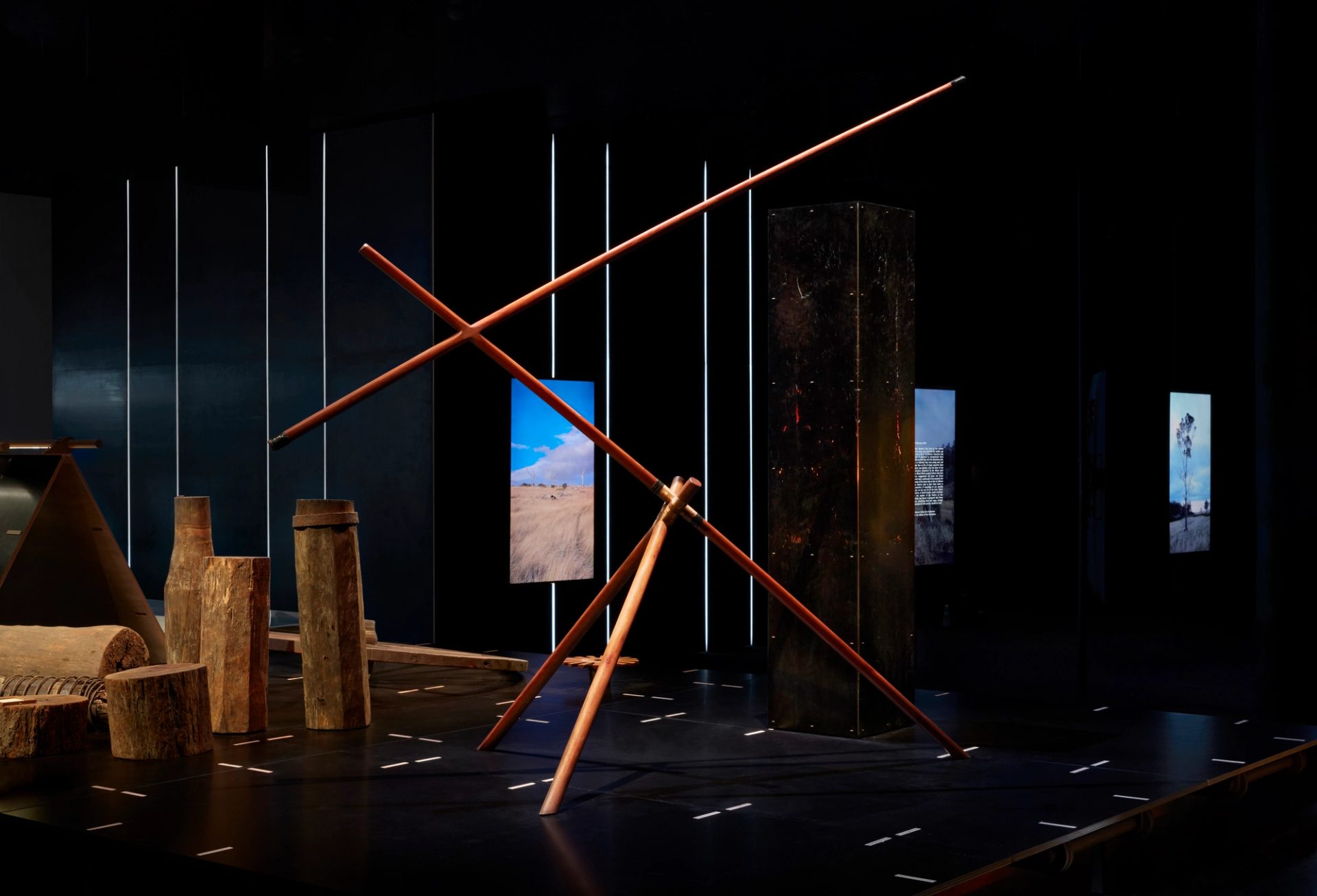
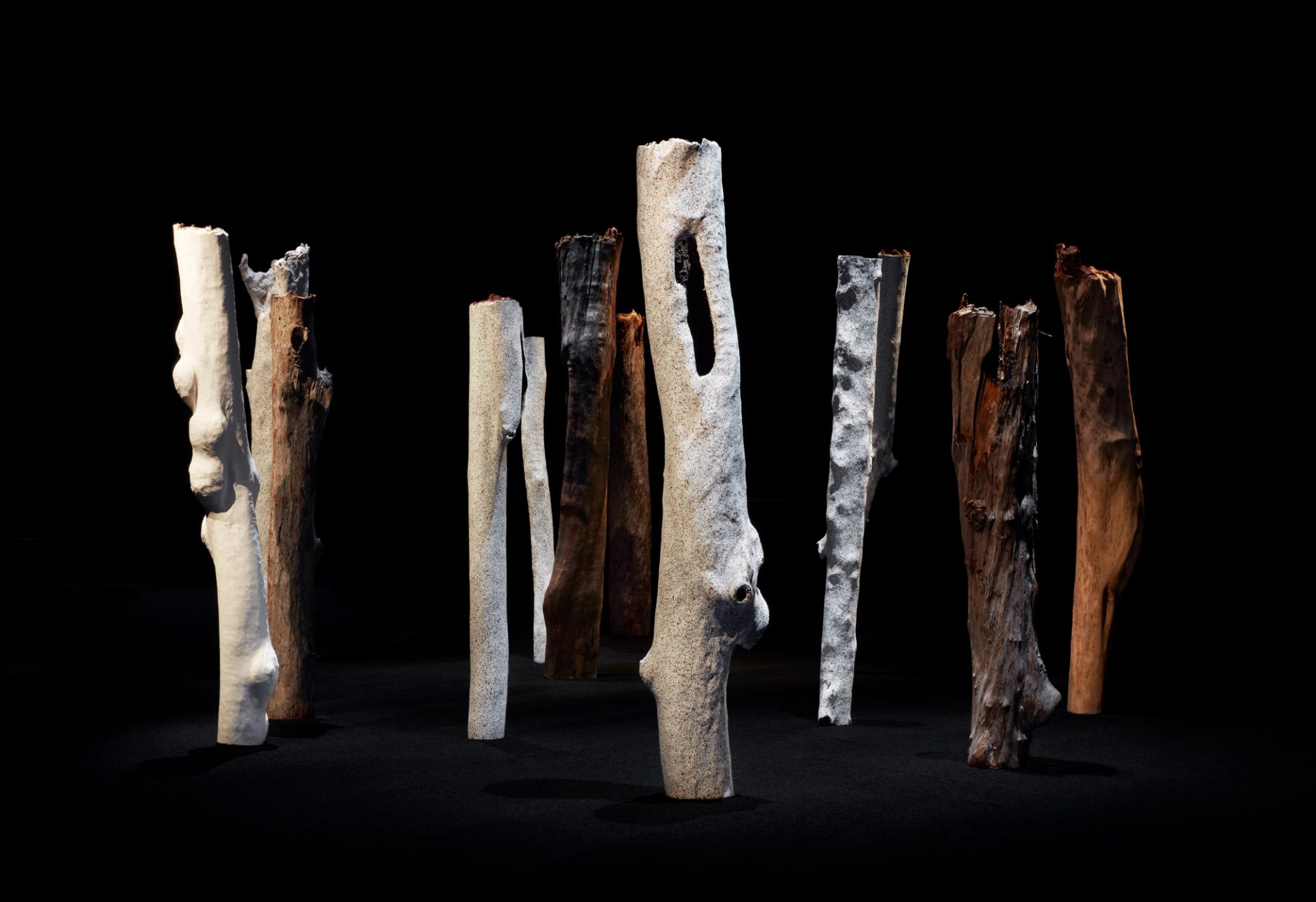
Eucalyptusdom confronts the institution's historical relationship to knowledge – steeped in the European tradition that to collect and catalogue something was to know it.
A folly that to amass samples of eucalypt species from all corners of the continent was to amass knowledge of the trees. The exhibition reasserts that not all knowledge is accessible. Accepting that not all knowledge is up for grabs is typically very challenging for non-Indigenous people.
Being okay with not knowing is a First Nations methodology that Powerhouse is beginning to come to terms with. Eucalyptusdom signals a conscious shift away from our material past and a step toward our relational future, whereby we care for and hold objects but recognise knowledge continues to exist with makers, knowledge holders, family and community. The conservation of First Nations collections is no longer solely focused on the preservation of tangible objects, but also on the cultural maintenance of intangible relationships.
This historic moment is best articulated by the commissioning and significant acquisition of Mittjii by senior Yolŋu artist Wukun Wanambi – 12 larrakitj that stand at the centre of the exhibition space, holding the past to account. The larrakitj may now be physically held in the Powerhouse Collection, but the associated knowledge, memory, song and ceremony will only be held by Wanambi and his descendants for perpetuity.
It is now the museum's responsibility to not only care for the object, but equally to care for our relationship with its maker and knowledge holders.
An Acknowledgement of Country must not be a platitude. True acknowledgement is not just a sentiment or a proceeding, but an ongoing behaviour, responsibility and commitment.
Prior to the establishment of the First Nations Directorate, Powerhouse categorised more than 6000 objects as part of its First Nations collection. Upon beginning a review, it soon became clear this number was heavily weighted toward photographic representations of our bodies and objects of appropriation created by non-Indigenous people. The review is still under way, but the true size of that collection is now better understood to be about 1200-1500 objects.
We are now mapping the processes for reasserting self-determination and self-representation so going forward, the First Nations collection will only be comprised of objects made by the hearts, hands and minds of Indigenous peoples. At the same time, it is important that the First Nations Directorate also maintains oversight of the thousands of objects and images already held by Powerhouse that were made by non-Indigenous creators which represent and implicate us without our self-determination. These will be managed under three categories: representation, appropriation and culturally relevant materials.
The First Nations Directorate is committed to implementing Indigenous ways of working across all Powerhouse sites and areas of practice, including collections, curatorial learning, public programs, design and delivery, communication, administration, operation strategy and governance. As we indigenise the structures, systems and procedures that were intended to exclude us, we divert them to create a future that reflects the truth of the past and honours our continuous cultures and connection to Country.
New acquisitions
Eucalyptusdom Publication
This publication expands upon a body of research and creative output generated via the eponymous exhibition at Powerhouse Ultimo, 11 October 2021 – 28 August 2022. It showcases the more than 20 creative practitioners commissioned to produce new works in dialogue with 500+ objects from the Powerhouse Collection.










